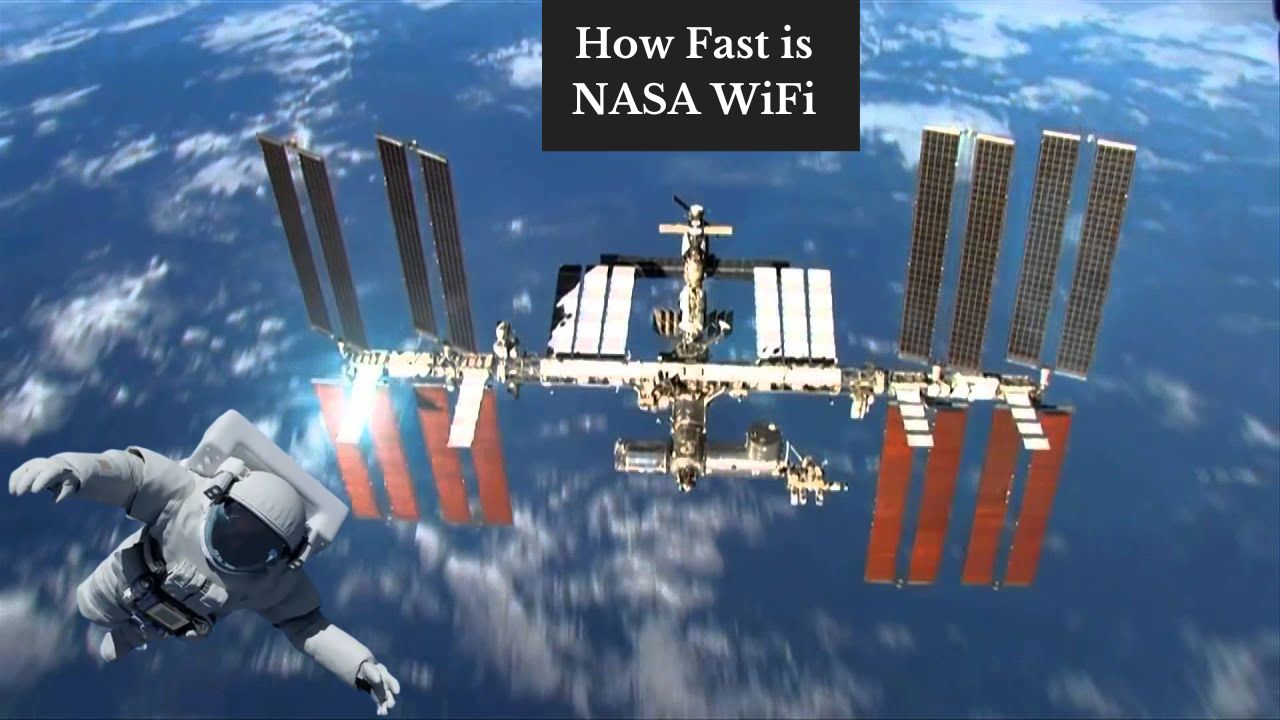NASA is the leading space agency in the world, working on cutting-edge space exploration, scientific discoveries, and technology development. With all of this work, it’s no surprise that NASA requires top-tier internet connectivity for their teams to communicate and collaborate effectively. But just how fast is NASA’s WiFi? In this article, we’ll explore the speed of NASA’s WiFi and its importance to their missions.
NASA’s Wi-Fi Speed: The Basics
NASA’s network is incredibly fast, reaching 91 gigabits per second. To put that into perspective, that’s about 13,000 times faster than the average home internet connection. This incredible speed is made possible by combining cutting-edge technology and a high-speed fiber-optic network.
The Importance of Speed in Space Missions
Speed is crucial to the success of NASA’s space missions. With astronauts orbiting the Earth at incredible speeds and spacecraft traveling vast distances in space, any delay or communication issue could have catastrophic consequences. NASA’s network allows teams to communicate and collaborate in real-time, ensuring that issues or problems can be addressed quickly.
The Technology Behind NASA’s WiFi
NASA’s WiFi network uses a combination of high-speed fiber-optic cables and advanced networking technology to achieve its incredible speeds. The network is based on the Ethernet standard, a set of protocols for connecting computers and other devices in a local area network (LAN). The Ethernet standard allows data to be transmitted at incredibly high speeds, which is essential for NASA’s communication needs.
The Challenges of Building Wi-Fi in Space
Building a WiFi network in space presents many challenges. For one, the extreme environment of space can cause interference with radio signals, which are used to transmit data between spacecraft and Earth. Additionally, the vast distances involved in space travel mean that data must travel enormous distances, which can result in significant delays. To overcome these challenges, NASA has developed advanced communication technologies, including laser communications, allowing high-speed data transmission over long distances.
The Future of NASA’s WiFi
As NASA continues pushing space exploration’s boundaries, the need for high-speed communication networks will only increase. In the future, NASA will likely continue developing and refining its WiFi network, incorporating new technologies and techniques to improve speed and reliability.
This will be essential for future missions, including manned missions to Mars and beyond.
The Benefits of Fast Wi-Fi for NASA
Aside from enabling real-time communication and collaboration, NASA’s fast WiFi has several benefits. It allows for the rapid transfer of large amounts of data, essential for transmitting scientific data and images from space back to Earth. It also enables remote control of spacecraft, allowing for more efficient and precise maneuvers.
Related: How Fast is 5G Compared to 4G?
How NASA’s Wi-Fi Speed Compared to Other Networks
NASA’s WiFi speed is incredibly fast, but how does it compare to other networks? Google Fiber currently offers the fastest commercial internet connection available to the public, with speeds up to 2 gigabits per second. However, even this speed is significantly slower than NASA’s Wi-Fi, demonstrating the incredible technology and infrastructure behind the space agency’s network.
The Role of Wi-Fi in Astronauts’ Lives
Wi-Fi is essential for communication between NASA teams on the ground and in space and plays a critical role in astronauts’ daily lives. For example, astronauts on the International Space Station use Wi-Fi to stay connected to loved ones back on Earth and access entertainment, news, and other online resources.
Security Measures for NASA’s Wi-Fi
Security is a top priority, given the sensitive nature of the information transmitted over NASA’s Wi-Fi network. The agency employs several security measures, including encryption and firewalls, to ensure the integrity of the network and protect against cyber attacks.
FAQs
How fast is NASA’s WiFi compared to the average internet connection?
NASA’s Wi-Fi is approximately 13,000 times faster than the average home internet connection.
What technology does NASA use for its WiFi network? NASA’s WiFi network uses a combination of high-speed fiber-optic cables and advanced networking technology based on the Ethernet standard.
What challenges does NASA face in building Wi-Fi networks in space?
Building Wi-Fi networks in space presents many challenges, including interference with radio signals and the vast distances involved in space travel.
What is the importance of speed in space missions?
Speed is critical to the success of NASA’s space missions. In addition, real-time communication and collaboration are essential for addressing any issues or problems that arise during missions.
What is the future of NASA’s Wi-Fi network?
As NASA continues pushing space exploration’s boundaries, the need for high-speed communication networks will only increase. As a result, NASA is likely to continue to develop and refine its Wi-Fi network, incorporating new technologies and techniques to improve speed and reliability.
Conclusion:
In conclusion, NASA’s WiFi network is an incredible technological feat that plays a vital role in space exploration. The speed and reliability of the network allow NASA teams to communicate and collaborate in real time, which is critical for the success of space missions. As technology advances, we can expect NASA’s WiFi network to continue to evolve and improve, helping to ensure the success of future space exploration endeavors.

